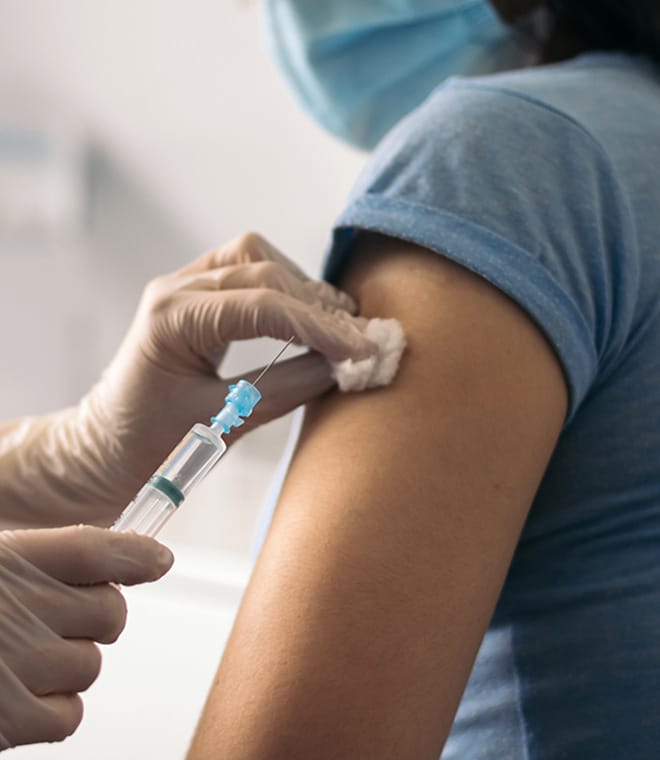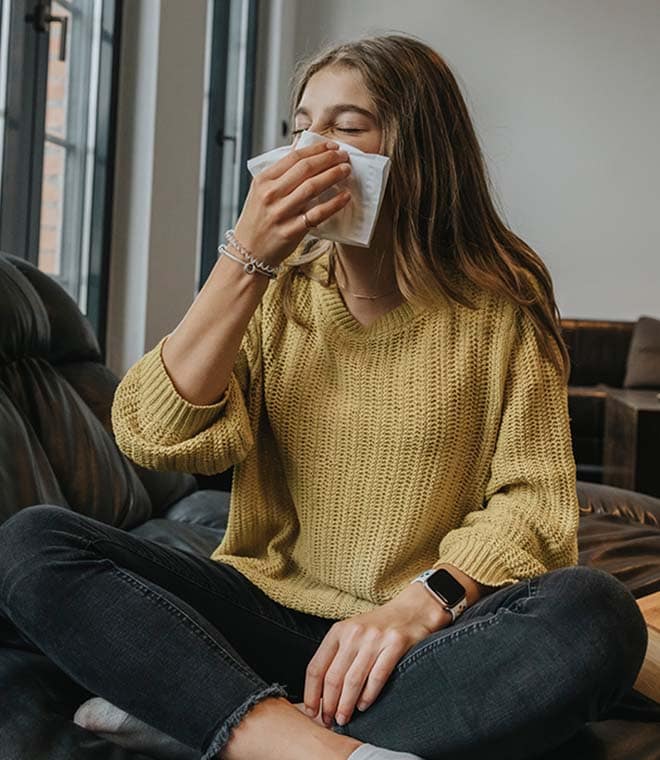Health
Flu vs. COVID-19: What you need to know
By Jenilee Matz, MPH Oct 21, 2025 • 5 min
Seasonal influenza (the flu) and COVID-19 are viral respiratory infections that can cause mild to severe illness. Both illnesses can cause complications that may require hospitalization, especially in older adults and people of any age with certain underlying health conditions. In some cases, the complications can even be fatal. While the illnesses share some characteristics, they are unique viruses with important differences. Here's what you need to know about the flu and COVID-19.
How the illnesses spread
Flu viruses and the virus that causes COVID-19 are both contagious, but COVID-19 seems to spread more easily than the flu. The viruses are mainly spread between people through large and tiny respiratory droplets when an infected person coughs, sneezes or talks. These droplets can land in the noses and mouths of people who are nearby and possibly be inhaled into the lungs. Spread is more likely when people are in close contact with one another. Less often, people may become infected when they touch a surface that contains the virus and then touch their mouths, noses or possibly eyes. Note that people who are infected with the flu or COVID-19 can be contagious for days before they develop symptoms. In general, people with COVID-19 may take longer to show symptoms, and they may be contagious for a longer period of time compared to those with the flu.
Symptoms to watch for
The flu and COVID-19 can each cause a variety of symptoms ranging from mild to severe, and in some cases, there are no symptoms (asymptomatic). The viruses cause many of the same symptoms, and it isn’t always possible to tell which virus you have based on symptoms alone. The only way to confirm which virus is causing your symptoms is to get tested.
Symptoms of the flu tend to develop within one to four days of exposure to the virus. With COVID-19, symptoms typically appear within two to five days but can develop up to 14 days after infection, typically around five days. Symptoms of both illnesses include:
- Fever
- Chills
- Headache
- Body aches and muscle pains
- Fatigue
- Shortness of breath or trouble breathing
- Cough
- Sore throat
- Runny or stuffy nose
- Vomiting or diarrhea
- Loss of or a change in taste or smell (more common with COVID-19)
The following are emergency signs of illness. If you have any of these symptoms or other symptoms that are concerning to you, seek medical help right away:
Flu emergency warning signs |
COVID-19 emergency warning signs |
|
|
In children, emergency warning signs of the flu can also include fast breathing, bluish lips or face, ribs pulling in with each breath, chest pain, not urinating for eight or more hours, dry mouth, no tears when crying, loss of alertness or a fever over 104°F. In children younger than 12 weeks, any fever is an emergency.
Which virus do I have?
Since both infections share many of the same symptoms, it can be difficult to know which illness you have without seeing your healthcare provider or getting tested. If you have symptoms of the flu or COVID-19, contact your provider, especially if you are at high risk for severe infection. They may examine or test you for the flu or COVID-19. (Walgreens offers in-store flu testing and COVID-19 testing) You can also purchase an over-the-counter COVID-19 and flu test.
Treatment
Most people who become infected with the flu or COVID-19 recover on their own. For mild cases, the goal of treatment is to ease symptoms. Getting enough sleep, drinking plenty of fluids and using over-the-counter medicines can temporarily relieve symptoms.
If you have the flu, your healthcare provider may prescribe antiviral medications. When treatment is started promptly after you begin to feel sick, these medications can lessen symptoms and shorten the length of your illness by about one to two days. Antiviral medicines may also reduce the risk of flu-related complications.
The U.S. Food and Drug Administration (FDA) has approved or authorized several antiviral medications to treat COVID-19, particularly for those who are at risk of severe illness. Speak with your healthcare provider if you think medications to help treat COVID-19 may be the right choice for you.
Prevention
COVID-19 and flu vaccines are approved by the FDA and can protect you from severe illness.
- Flu vaccination can prevent flu-related illnesses, healthcare provider visits and hospitalizations, and it can even be lifesaving in children. Everyone age 6 months and older should get a flu shot each year.
- COVID-19 vaccines are highly effective in preventing severe illness, hospitalization and death due to the illness, especially for people at higher risk from COVID-19. Talk to your healthcare provider to decide if getting a COVID-19 vaccination is right for you.
Note if you are eligible to receive a flu shot and COVID-19 vaccination, the CDC states that you can get them both at the same time.
There are also everyday actions you can take to reduce your risk of getting sick with COVID-19 or the flu:
- Wash your hands often. Wash your hands with soap and water for at least 20 seconds after coughing, sneezing, blowing your nose and being in public settings. When soap and water aren't available, use a hand sanitizer that contains at least 60% alcohol.
- Do not touch your mouth, nose or eyes with unwashed hands.
- Keep your distance from others, especially those who are sick. If someone in your home is ill, try to keep your distance from them, too.
If you have either illness, it's important to try to avoid spreading it to others. Stay home when you're sick, except to get medical care. Some people, especially those who have an increased risk for COVID-19, may choose to wear a mask in public to help provide greater protection.
Clinically reviewed and updated October 2025.
Sources:
- https://www.cdc.gov/flu-vaccines-work/benefits/index.html
- https://www.cdc.gov/flu/about/flu-vs-covid19.html
- https://www.cdc.gov/vaccines/covid-19/clinical-considerations/covid-19-vaccines-us.html
- https://www.cdc.gov/covid/signs-symptoms/index.html
- https://www.cdc.gov/flu/signs-symptoms/index.html
- https://www.cdc.gov/flu/highrisk/index.htm
- https://www.cdc.gov/covid/risk-factors/index.html
- https://www.cdc.gov/covid/php/surveillance/vaccine-effectiveness.html
- https://www.cdc.gov/flu/prevention/index.html
- https://www.cdc.gov/covid/prevention/index.html



